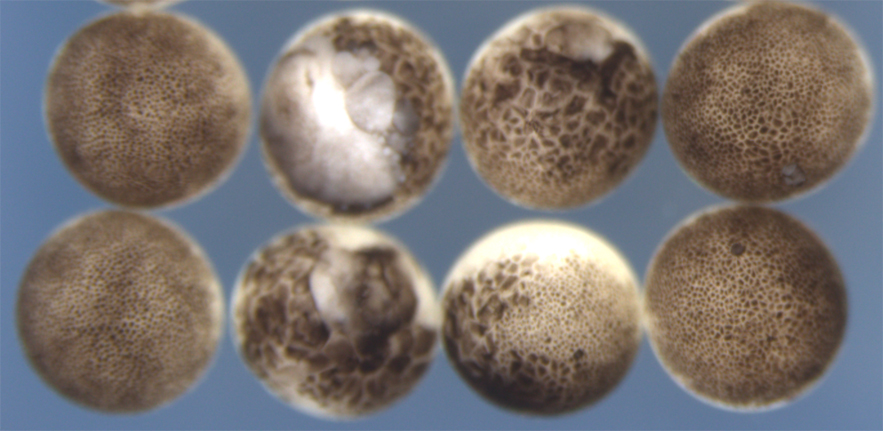Submitted by Administrator on Mon, 05/03/2018 - 17:24
Accurate replication of chromosomal DNA is essential for cell proliferation and the development of multicellular organisms. The mechanistic principles of chromosomal DNA replication are evolutionarily conserved in eukaryotes at the molecular level. However, the regulation of the initiation of replication changes considerably during early vertebrate development. A collaborative team of researchers from the Francis Crick Institute, the MRC Laboratory of Molecular Biology and the Department of Zoology, led by Dr Torsten Krude, have discovered and characterised a new macromolecular protein complex that is essential for rapid DNA replication and cleavage cycles in very early embryos.
In the amphibian model organism Xenopus laevis, the mid-blastula transition (MBT) marks a turning point for several features of DNA replication: in early embryos before the MBT, cell division cycles are very fast and tens of thousands of DNA replication forks initiate at random positions on the genome, in the absence of transcription. After the MBT, cell division cycles become much longer, and DNA replication initiates at defined replication origins in the presence of efficient transcription. Previous work by the team members had established that small non-coding Y RNAs are required for DNA replication after the MBT, but not before. It was unknown, how DNA replication initiates efficiently without requiring Y RNAs in the early embryos.
In their paper, the research groups of Jim Smith (Francis Crick Institute), Julian Sale (MRC-LMB) and Torsten Krude (Zoology) now report the identification, purification and functional characterisation of the chromatin remodelling complex xNuRD as an essential DNA replication factor in eggs and early embryos of Xenopus laevis. They demonstrate that xNuRD can initiate DNA replication in the absence of non-coding Y RNAs. Inactivation of xNuRD after fertilisation results in the inhibition of DNA synthesis, in developmental delay and embryonic lethality in early embryos.

This can be seen on the photograph: while the embryos on the left and right columns are controls that have proceeded to the mid-blastula stage, different subunits of xNuRD have been inactivated in the embryos dying, shown in the central two columns. (Photo by Dr Kevin Dingwell)
Christov, C.P., Dingwell, K.S., Skehel, M., Wilkes, H.S., Sale, J.E., Smith, J.C., and Krude, T. (2018). A NuRD Complex from Xenopus laevis Eggs Is Essential for DNA Replication during Early Embryogenesis. Cell Rep 22, 2265-2278. https://doi.org/10.1016/j.celrep.2018.02.015
